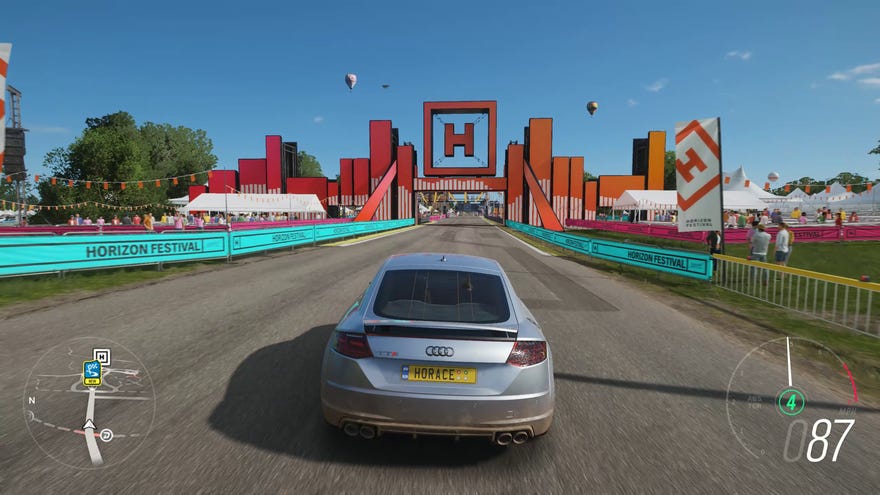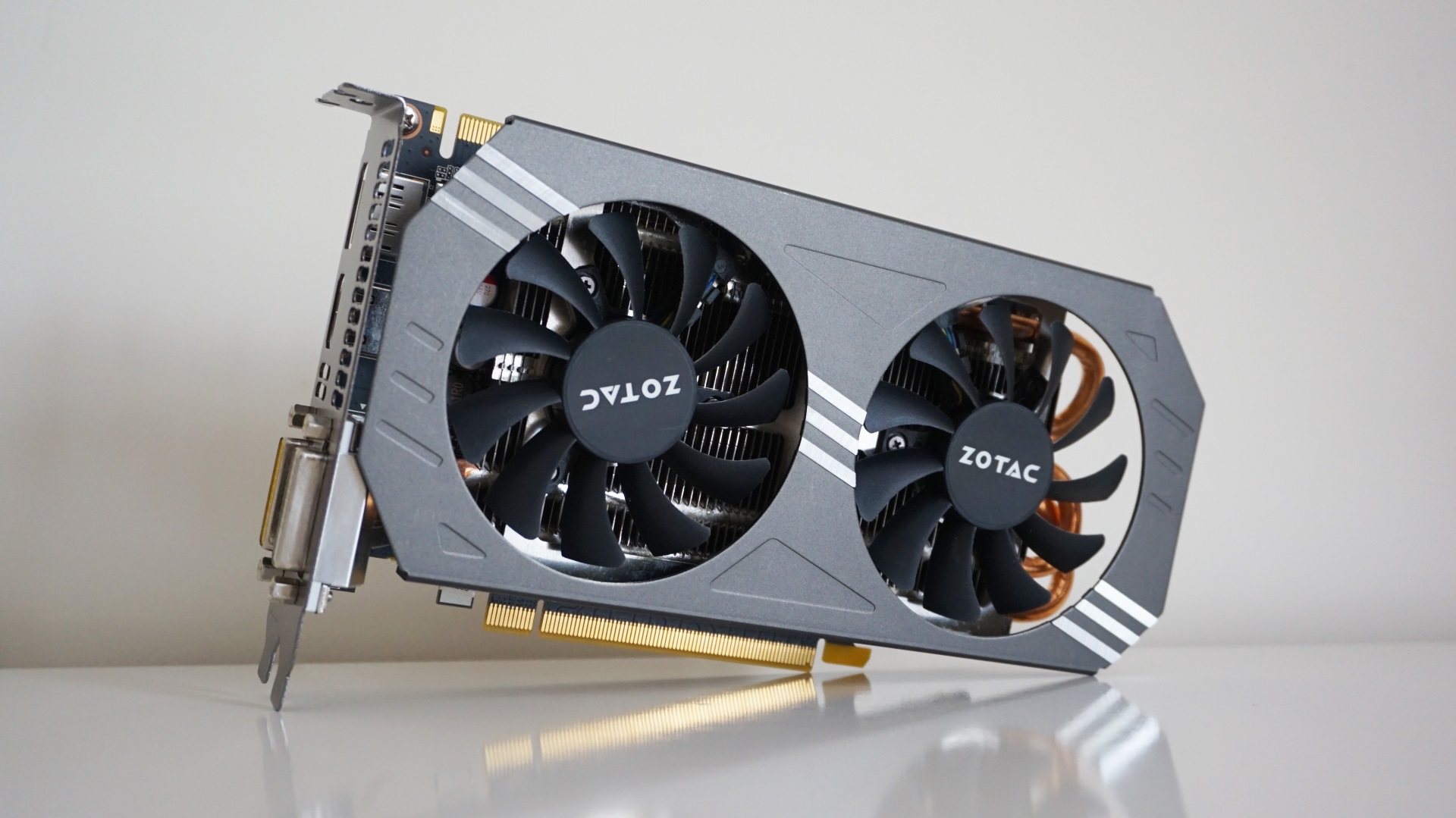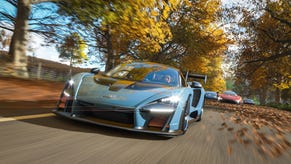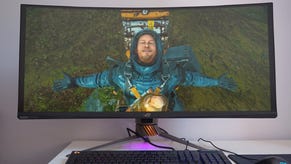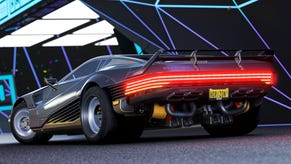Forza Horizon 4 PC graphics performance: how to get the best settings
Greasing the wheels
Forza Horizon 4 remains one of the most joyous driving games you can play on PC, and the new LEGO Speed Champions expansion (out now) is just further proof that the folks over at Playground Games know how to have a real good time behind the wheel. As a result, I thought it was high time to revisit this colourful motor fest to see what kind of performance you can get from Forza Horizon 4 with today's best graphics cards, plus a couple of oldies I've got knocking around in the boot. Whether you're here for the big blocky LEGO cars or coming in fresh as part of Microsoft's new Xbox Games Pass for PC, here's how to get the best settings for your GPU.
Playground Games had a lot to prove with the PC version of Forza Horizon 4 when it first came out last October, as its Australian-themed predecessor Forza Horizon 3 needed its fair share of PC pit stops when it launched back in 2016. Happily, I'm pleased to report that Forza Horizon 4 is a real beaut in the old graphics card performance department, as even the ancient GPUs I've got accruing in my collection can handle it at decent settings without stalling and coming to a grinding halt.
https://www.youtube.com/embed/6JVXpWF9-YUForza Horizon 4 PC requirements
But before we dive straight into how each graphics card got on, let's take a look at Forza Horizon 4's minimum and recommended PC requirements. As you can see below, it shouldn't be too difficult to get Forza Horizon 4 up and running, no matter how aged your graphics card might be. My test PC comfortably exceeds the recommended spec, as I've tested every card with an Intel Core i5-8600K with 16GB of RAM and the latest Windows 10 update.
Minimum specs:
OS: Windows 10
Processor: Intel Core i3-4170 or Intel Core i5-750
RAM: 8GB
Graphics: Nvidia GeForce 650Ti / AMD Radeon R7 250X
Video memory: 2GB
Recommended specs:
OS: Windows 10
Processor: Intel Core i7-3820 or higher
RAM: 12GB
Graphics: Nvidia GeForce GTX 970 or Nvidia GeForce GTX 1060 3GB / AMD Radeon R9 290X or AMD Radeon RX 470
Video memory: 4GB
Forza Horizon 4 PC graphics performance: how to get the best settings
I stuck with the game's preset quality settings during my tests, as most cards ran Forza Horizon 4 so well that I felt little need to start tweaking them. However, it's worth pointing out that the top Ultra setting doesn't actually max everything out, so if you fancy even prettier shadows, motion blur, dynamic geometry (that is, better draw distances and surrounding detail), reflections, windshield reflections, and superior anti-aliasing, you can shunt all of those up another notch (some to EXTREME) if you feel like your graphics card isn't being challenged enough. FXAA (another type of anti-aliasing) is also turned off even when you're using the Ultra quality setting, so you can switch that on for even smoother edges if your graphics card is up to the task.
If you want a more bespoke Forza Horizon 4 experience, you can tweak each setting individually using the Advanced menu in the Video settings to create your own Custom quality profile. That said, the only way to switch between different quality presets on the Basic menu is to make sure the Dynamic Optimisation setting is turned on. Otherwise it locks off whatever quality setting you currently have enabled. A bizarre choice, perhaps, but an easy thing to work around.
I left Dynamic Optimisation turned off during my tests so I could get a more uniform idea of how each card performed across different presets, but I found that leaving it on actually makes very little difference. When I re-ran the benchmark on the Nvidia GeForce GTX 970 with Dynamic Optimisation turned on, for example, I got the same average frame rate and saw the same highs and lows as I did with it turned off. As such, those hoping this setting might revolutionise the experience of a struggling card will probably have to dig deeper into the advanced settings menu to get the performance boost they're looking for.
Helpfully, you can get a rough idea of what each setting does to your GPU's performance by reading the description on the right side of the screen. Some settings only have a 'minor' impact on your graphics card, for example, while others have a more 'moderate' impact. It also tells you which settings benefit from having more video RAM (so you might want to turn those down if your card only has 2-4GB of VRAM, for instance), and which ones affect your CPU as well, allowing you to pinpoint which settings to adjust depending on what's inside your PC.
The big 'uns to watch out for are:
- Shadow Quality
- Dynamic Geometry
- World Car Level of Detail (which improves the quality of the online Drivatars, traffic and other player cars)
- Reflection Quality
- MSAA (multi-sampling anti-aliasing for smooth edges)
Forza Horizon 4 also gives you the option of lock the frame rate on the Basic Video menu to 30fps or 60fps if you prefer to keep things nice and steady instead of veering from one frame rate to another. 30fps can be handy if your graphics card is struggling to get to 60fps (although, judging by my results, I doubt this will be a problem for most modern GPUs), but generally I found that even older cards were pretty stable when playing on one of the presets (the difference between their minimum and maximum frame rates often no higher than 10fps), so you'll probably be fine sticking with the 60fps lock for the most part. Of course, those with high refresh rate monitors will want to make sure the frame rate is set to Unlocked (Variable) so you can take advantage of all those lovely extra frames.
Forza Horizon 4 PC graphics performance
With all that in mind, let's jump straight in and see how each graphics card held up. As always, the main goal here is to find the best combination of settings to achieve a smooth 60fps at 1920x1080, 2560x1440 and 4K. Fortunately, as I mentioned above, Forza Horizon 4 is incredibly well-optimised, and most cards should be able to play at Ultra or High settings without much fiddling whatsoever.
To test each card, I used Forza Horizon 4's internal benchmark. This takes you through a race in a 2018 McLaren Senna car with multiple other super cars onscreen, different lighting conditions and various weather effects at play, such as rain and spray from wet puddles on the road, and spits out an average frame rate result at the end of it. However, for the sake of thoroughness, I also made a note of the highs and lows I saw in the frame rate while the benchmark was taking place, giving you a rough idea of the very worst kind of speeds you can expect, as well as the best.
- Nvidia GeForce GTX 970
- Nvidia GeForce GTX 1050 Ti
- Nvidia GeForce GTX 1060 (6GB)
- Nvidia GeForce GTX 1070
- Nvidia GeForce GTX 1070 Ti
- Nvidia GeForce GTX 1080
- Nvidia GeForce GTX 1650
- Nvidia GeForce GTX 1660
- Nvidia GeForce GTX 1660 Ti
- Nvidia GeForce RTX 2060
- Nvidia GeForce RTX 2070
- Nvidia GeForce RTX 2080
- Nvidia GeForce RTX 2080 Ti
- AMD Radeon R9 270
- AMD Radeon R9 290
- AMD Radeon RX 570 (8GB)
- AMD Radeon RX 580 (8GB)
- AMD Radeon RX 590
- AMD Radeon RX Vega 64
- AMD Radeon 7
Nvidia GeForce GTX 970
I was starting to lose faith in my trusty Zotac GTX 970 Dual Fan card after its slightly disappointing results in my Shadow of the Tomb Raider graphics performance test, but thankfully it came up trumps in Forza Horizon 4, delivering a smashing performance at both 1920x1080 and, surprisingly, 2560x1440.
This is partly down to its 4GB of memory, which is still more than enough to cope with the majority of Forza Horizon 4's quality presets. It struggled a bit when I played on Ultra, as this often wanted to use around 4.2GB or 4.5GB of VRAM according to the benchmark results screen, which more than the GTX 970 is capable of handling. As such, frame rates took a bigger dive on this preset, but as you can see from the results below, it's still pretty respectable all things considered. No wonder Playground Games have listed this as one of their recommended graphics cards.
Can I play this at 1920x1080?
You sure can. Even with the aforementioned memory constraints, the GTX 970 produced an average frame rate of 54fps on Ultra at this resolution, with highs of 66fps and lows of 44fps. That's an excellent result for a card of this age, and dropping the quality down to High will push the frame rate even higher. Here, I saw an average of 77fps, with the frame rate never dipping below 62fps.
Those with high refresh rate monitors may feel more comfortable playing on Medium, however, as here I saw frame rates hit a maximum of 96fps with an average of 83fps. There were still the occasional lows of 68fps on this setting, leaving quite a large gap between its minimum and maximum frame rates, but as long as you're all right playing with a range of almost 20fps, Medium will suit high refresh rate monitors down to the ground.
Can I play this at 2560x1440?
Yes! And even better, you can do it without compromise, too. On High, the GTX 970 performed admirably, averaging 64fps in the benchmark. The slowest frame rate I saw was 54fps, too, so it's unlikely you'll notice any dips in speed if and when they do actually occur. You'll be able to make use of high frame rate monitors on this setting as well, as the highest frame rate I recorded was 73fps.
You can even play on Ultra at this resolution if you don't mind having an average frame rate somewhere in the mid-40s. Here, the frame rate dipped to 37fps on occasion, but also rose as high as 52fps, producing an average of 43fps in the benchmark. Those figures might not sound great for a racing game, but in practice I'd still say it was perfectly playable if I didn't have the aid of a frame rate counter giving me a breakdown of its overall speed.
Can I play this at 4K?
Surprisingly, yes! You don't even have to do it on Low, either. Against all expectation, the GTX 970 managed quite capably on High at 4K, averaging an impressive and highly playable 39fps. There were a couple of speed bumps that saw the frame rate tumble to around 34fps, but out on the straight and narrow, this card positively soared all the way to 43fps.
That might not sound like much, but for this kind of card? That's positively excellent. You can raise the speed limit by dropping down to Medium or Low, the former delivering an average frame rate of 44fps while the latter gets you even closer to that perfect 60fps with an average of 51fps, but all three looked smooth and stable on my 4K TV, so you could easily crank it up to High and still get a good experience if you wanted.
Just don't bother with Ultra, as that places the GTX 970 very much on the wrong side of the 30fps track - despite its earlier successes with this preset at lower resolutions. It's just about doable if you're really desperate, but with an average frame rate of just 27fps and juddery lows of 22fps, it's just not worth it.
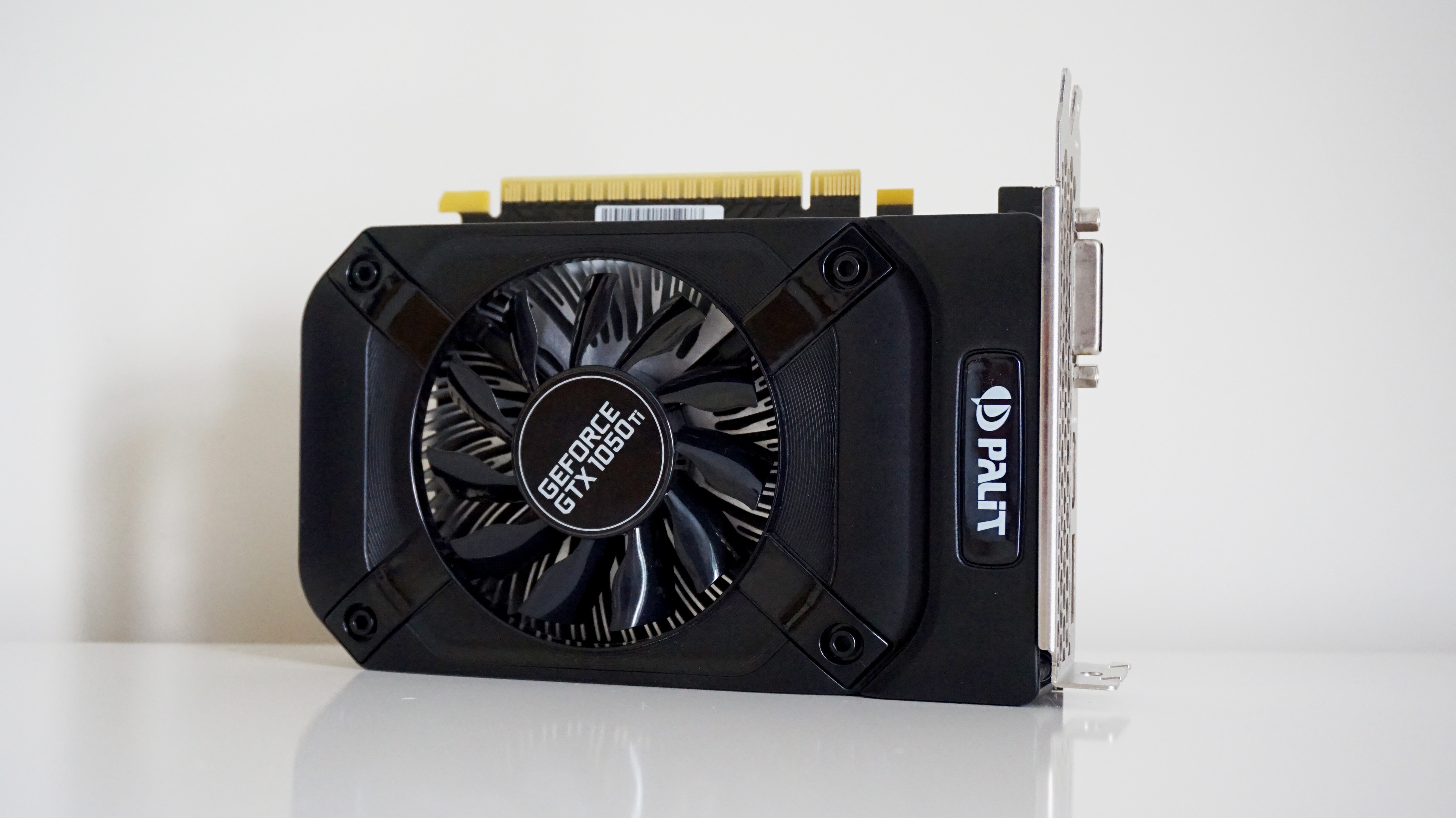
Nvidia GeForce GTX 1050 Ti
The Nvidia GeForce GTX 1050 Ti may have been replaced by the GTX 1650 now, but man alive do its modest 768 CUDA cores still put in an impressive performance. Clocked at 1290MHz with a boost clock speed of 1392MHz, this 4GB tiddler wasn't that far behind the 1664 CUDA core-equipped GTX 970 in most of my tests, delivering playable frame rates at both 1920x1080 and 2560x1440, and even a small smidgen of 4K. Who'd have thought, eh?
Can I play this at 1920x1080?
Yes indeedy. Ultra and its 4GB+ VRAM demands are a little bit too much for this particular card, but I still got a very respectable average of 45fps in Forza Horizon 4's benchmark on Ultra at 1080p, with highs of 56fps and lows of 38fps. However, for those after a flawless 60fps, High is your best bet. Here, the GTX 1050Ti only experienced the very occasional 58fps pothole, and instead spent most of its time cruising around the 68fps zone. It even got up to 77fps sometimes, so those with high refresh rate monitors should have plenty of options here without having to compromise on graphical fidelity.
Can I play this at 2560x1440?
Yes! You'll probably want to keep it on Low for a perfect 60fps, but both Medium and High still produced splendid results. On the former, I saw an average of 56fps, with the frame rate veering between a low of 48fps and a high of 64fps, but the latter only saw speeds dip very slightly, so you might as well push it to High if you can. Here, the GTX 1050Ti managed an average of 52fps, which is pretty impressive for such a low-power card.
Can I play this at 4K?
Just about, but you're going to have to settle for Low to get anything vaguely playable. The GTX 1050Ti managed an average of just 39fps on this setting at 4K, so you may want to lock the frame rate in at 30fps if, for some reason, you happen to own a 4K monitor and want to utilise all 3840x2160 pixels of it with this particular graphics card. The GTX 1050Ti was never built to be a 4K graphics card, of course, so it's unlikely you'll want to play at this resolution given its superior results elsewhere, but hey, at least you can't say I'm not thorough.

Nvidia GeForce GTX 1060 (6GB)
Now we're talking. Despite being one of the smaller Nvidia GeForce GTX 1060s out there, Zotac's miniature take on this mid-range graphics card punched well above its usual weight in Forza Horizon 4, delivering smashing results across all three resolutions. Playground Games actually list the 3GB version of the GTX 1060 in their recommended specs list, but you'll have to make do with results for the 6GB version instead here, as I haven't been able to get hold of a 3GB one to see how they compare.
Instead, you'll have to make do with some educated guesses based on other results I've obtained. I suspect 3GB GTX 1060s will most likely be fine playing on Low and Medium presets at 1920x1080 and 2560x1440, but I'd imagine they'll be hit quite hard when playing on High and Ultra. Playground's High preset, for example, uses about 3-3.5GB of video memory, while Ultra uses between 4-4.5GB, both of which exceed what you'll find on a 3GB GTX 1060. That's not to say you won't get playable results, however, as my adventures with the GTX 970 and GTX 1050Ti show, but it's unlikely you'll achieve the same speeds listed below with only half the available memory.
Can I play this at 1920x1080?
Absolutely, and on Ultra too! High refresh rate monitor owners in particular will have a field day with this one, as I saw an average frame rate of 72fps here, with highs of 85fps. Indeed, the frame rate never dipped below 62fps on this preset, so those with regular 60Hz monitors will get a perfect 60fps straight off the bat.
Can I play this at 2560x1440?
You sure can, and you can even do it on Ultra again as well. Frame rates didn't reach quite the same heady heights on this preset as they did at 1080p, but an average frame rate of 57fps is still nothing to sniff at. The lowest speed I saw was 52fps as well, not that I would have noticed it if I didn't have a frame rate counter going in the top corner.
High refresh rate monitor peeps will probably want to drop the quality down a notch or two to make the most of the extra frames available, but 60Hz screens can once again jump straight in with flawless 60fps perfection.
Can I play this at 4K?
Surprisingly, yes! I didn't even have to settle for Low, either, even if it was the closest I got to 60fps. To be fair, Forza Horizon 4's version of 'Low' doesn't actually look that bad compared to other Low presets I've seen (*cough*Shadow of the Tomb Raider *cough*), so those who prefer an average of 59fps (with highs of 64fps and lows of 54fps) will still get a perfectly decent experience at this resolution.
However, when bumping it up to Medium still gives you a very smooth average of 52fps, why settle for Low? The frame rate sometimes dropped to around 48fps on this preset, and only reached a peak of 55fps, but a steady 50-odd fps at 4K is damn impressive for this kind of card. If you've got a 4K TV and can drag your PC to it, I'd recommend doing so.

Nvidia GeForce GTX 1070
Asus' beefed up take on Nvidia's GeForce GTX 1070 is one of the faster versions of this card out there, but even if your own GTX 1070 doesn't have a base clock speed of 1632MHz or a boost clock of 1835MHz, chances are you'll still get impeccable performance out of whatever version you happen to own, as the GTX 1070 cruised through Forza Horizon 4 with silky smooth frame rates across the board. If you also happen to have a high refresh rate monitor, you're going to have a grand old time here.
Can I play this at 1920x1080?
You can indeed, and probably push everything up to Extreme while you're at it, too, as playing on the Ultra preset yielded a rather tasty average frame rate of 91fps. The frame rate yoyoed quite a bit during the benchmark, ranging from a low of 78fps to a high of 112fps, but unless you own a high refresh rate monitor and are particularly susceptible to frame rate changes at that kind of speed, you'll probably be fine letting things fly at whatever maximum speed your monitor's capable of.
Can I play this at 2560x1440?
Yup, and you'll probably feel the Extreme itch here, too, as Ultra once again produced frame rates well in excess of 60fps. The average was a little lower this time round, settling around 74fps, but I still saw peaks of 80fps and lows of only 65fps, so why not flex some of those Extreme muscles and see what this thing can really do, eh?
Can I play this at 4K?
Absolutely, and if you're sensing a theme with the supremely smooth Ultra results on this card, you'd be correct in assuming Ultra will fit the bill here too. I only saw an average frame rate of 52fps on Ultra at 4K (only!), but hey, when the GTX 1070 has traditionally struggled to do anything more than Low at 4K in other games, I certainly ain't complaining.
If the thought of occasional dips to 44fps makes you feel travel sick, though, you'll find the promised land of 60fps right around the corner on High, as here I saw an average of 65fps, with lows of just 58fps and highs of 71fps.
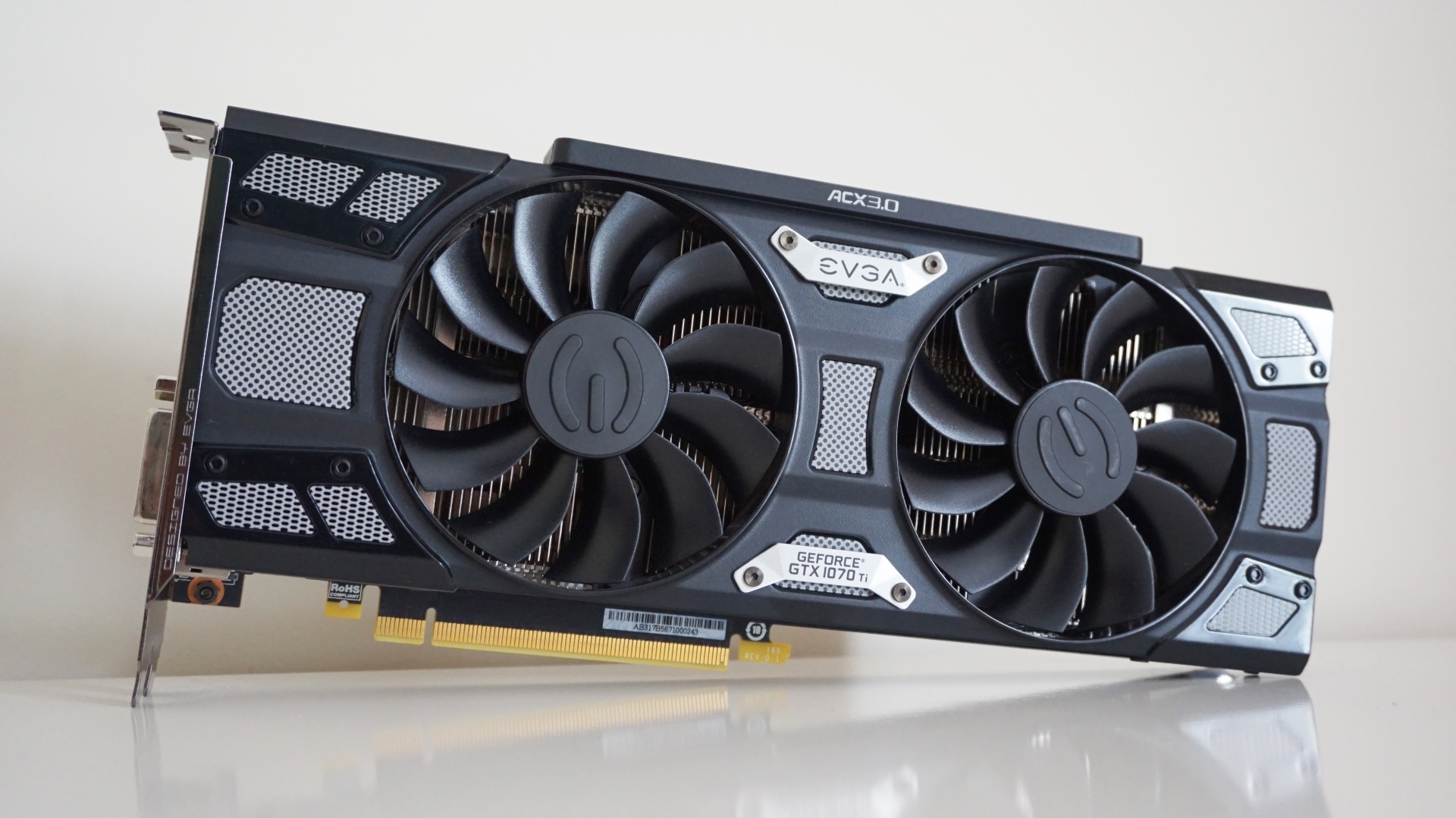
Nvidia GeForce GTX 1070 Ti
When the Nvidia GeForce GTX 1070Ti came out roughly this time last year, Nvidia decided to impose a weird rule regarding its clock speeds. Unlike nearly every other card in existence where third party manufacturers are allowed to add small but stable factory overclocks to their base and boost clock speeds, the GTX 1070Ti remained fixed at 1607MHz and 1683MHz respectively.
This should make the results below pretty representative of what you'll see on other GTX 1070Ti cards out there. Technically, owners of this particular EVGA card can skirt round Nvidia's strange rule by using EVGA's Precision software to help optimise the card so it's in the absolute peakest of peak condition, but for the sake of science, I ran my tests as you'll find this card out of the box. And man alive is it fast.
Can I play this at 1920x1080?
Indubitably. Fancy an average frame rate of 101fps on Ultra with highs of 122fps? The GTX 1070Ti makes it possible. As with the regular Nvidia GeForce GTX 1070, this resolution is prime for pumping things up to Extreme where applicable, but those with high refresh rate monitors may just want to enjoy all those extra frames on Ultra depending on the speed of your screen. Whatever you want to do, the GTX 1070Ti caters for all options here.
Can I play this at 2560x1440?
Of course, and you can get an average of 82fps on Ultra while you're at it, too. The highest frame rate I saw was 95fps on this preset, while the lowest was 71fps, so you've still got plenty of room for some Extreme options if you want to make the game look even prettier than it already is.
Can I play this at 4K?
Yep, and unlike the regular GTX 1070, you can get a lovely average of 58fps on Ultra this time round to boot. I still saw a couple of dips to 51fps in the game's internal benchmark, but I wouldn't have noticed if I didn't have a frame rate counter barking lots of numbers at me all the time. I even saw a couple of highs of 67fps, too, so those with high refresh rate monitors will still get some use out of it with the GTX 1070Ti, although you'll probably want to drop the quality down to High to really push into that 60fps+ zone.
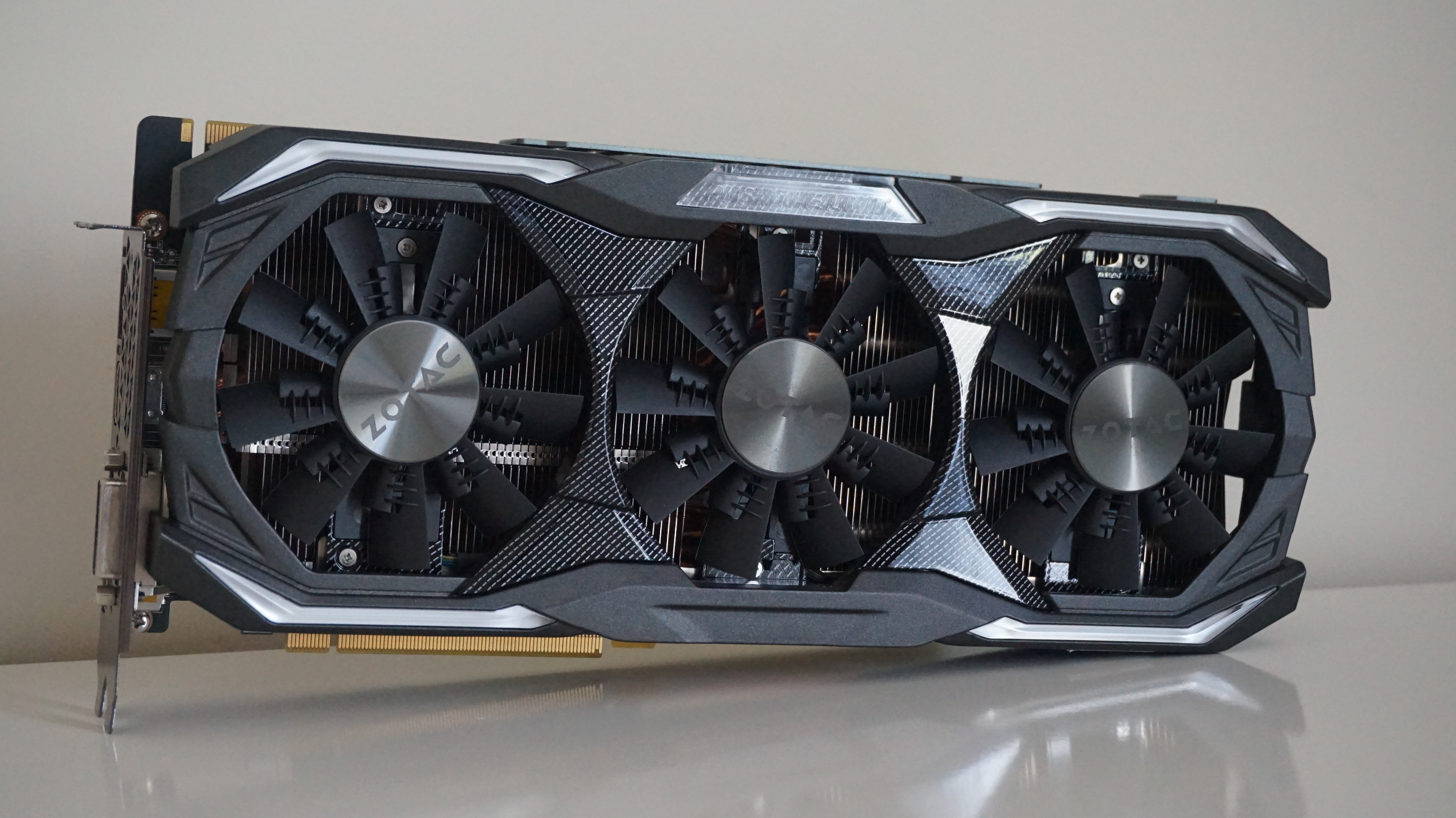
Nvidia GeForce GTX 1080
Zotac's jumbo Nvidia GeForce GTX 1080 makes a return appearance after its impressive stint in my Shadow of the Tomb Raider graphics performance test, and much like the GTX 1070 and GTX 1080 Ti, made absolute mincemeat of Forza Horizon 4 across all three resolutions.
With a base clock speed of 1771MHz and a boost of 1911MHz, this is once again one of the better case scenarios you'll probably see from the GTX 1080, but like I said back on the GTX 1070, I doubt you're going to be disappointed with the card's performance, regardless of which model you happen to have in your PC. To the frame rates!
Can I play this at 1920x1080?
Silly question, really. Of course you can. On Ultra, you can expect to see a massive average frame rate of 114fps with the GTX 1080, with highs of 138fps and lows of a mere 100fps. As such, you might as well just bump everything up to Extreme and enjoy Forza Horizon 4 in all its British countryside glory. But why settle for 1080p when even slicker speeds lie elsewhere?
Can I play this at 2560x1440?
Another silly question when dealing with this card, but if an average of 94fps on Ultra isn't good enough for you, I don't know what is. Again, this is another perfect candidate for some Extreme tweaking, as the lowest frame rate I saw on Ultra was just 80fps (the highest, for sake of comparison, was a whopping 110fps). That should give you plenty of room to appreciate this game on absolute maximum quality, all the while enjoying lovely high frame rates in the process. Go forth and enjoy.
Can I play this at 4K?
You betcha. Whereas the GTX 1070Ti just scraped 60fps on Ultra at this resolution, the GTX 1080 really does go the extra mile here. With an average frame rate of 67fps, this card delivers 4K perfection right off the bat. Indeed, the frame rate never dipped below 60fps during the game's internal benchmark, and even reached as high as 70fps on several occasions. High frame rate chasers may want to opt for High quality here to really make the most of whatever refresh rate they happen to have, but really, Ultra is just so damn pretty you'll likely never want to leave.

Nvidia GeForce GTX 1650
Nvidia's GeForce GTX 1650 might not be quite as fast as AMD's Radeon RX 570 might be, but it's still a decent all-round 1080p card for those on a budget - especially for those after top dollar settings in Forza Horizon 4.
This Zotac model is one of the cheapest GTX 1650 cards you can buy today, but it does have a slightly higher boost clock speed than Nvidia's reference specification, coming in at 1695MHz as opposed to 1665MHz. This shouldn't make a huge difference, though, so I'm pretty confident you'll be able to take the results below as the bare minimum kind of performance you can expect to see from all GTX 1650s you can buy today.
Can I play this at 1920x1080?
Absolutely, and you can shift that gear stick all the way up to Ultra, too, for a super smooth average of 63fps.
Can I play this at 2560x1440?
You sure can, although this time Ultra will only get you an average of 48fps. Instead, I'd recommend sticking to High at this resolution for an average of 62fps. In the benchmark, the GTX 1650 didn't go any lower than 54fps on this particular setting, but if you want to be absolutely sure of a perfect 60fps at all times, then you're probably better off sticking with Medium. You're not really getting that much more on average - just 67fps - but it also never went any lower than 62fps, giving you just that little bit of extra leeway for some super smooth visuals.
Can I play this at 4K?
Sort of, but even Low will only produce an average of 48fps at this resolution, so do yourself a favour and stick with either 1080p or 1440p for this one.
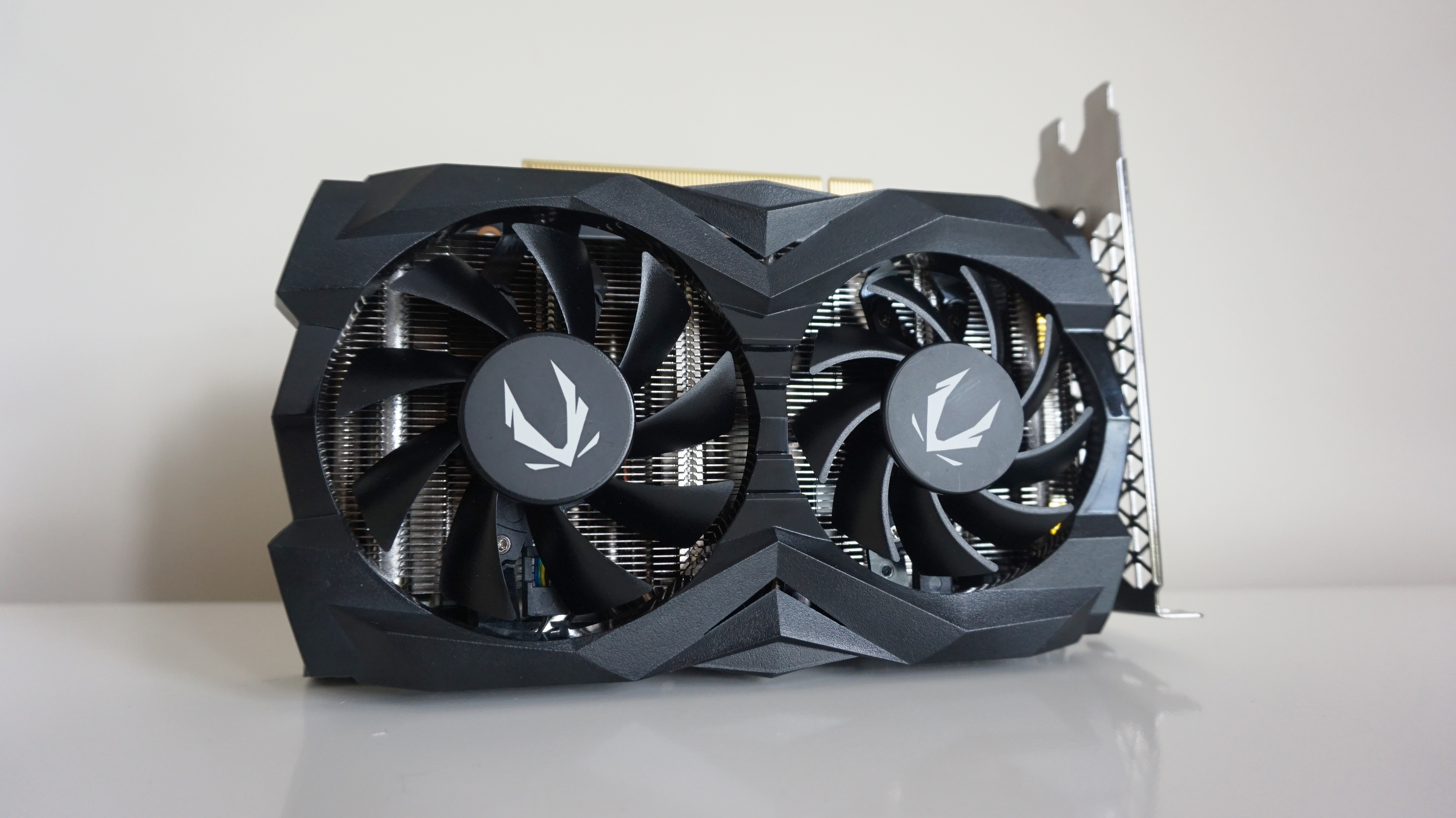
Nvidia GeForce GTX 1660
The Nvidia GeForce GTX 1660 is a great card for 1080p gaming. It's not only cheaper than the Nvidia GeForce GTX 1060, but it's faster, too, making it a great companion for those after some smooth Forza Horizon 4 action.
On test today is Zotac's regular edition of the GTX 1660, which has exactly the same specs as Nvidia's reference specification. As a result, those of you with faster GTX 1660s will probably see slightly better results than what I've outlined below, so this should be taken as the absolute bare minimum kind of experience you can expect from this card instead of a best case scenario. Either way, though, you're in for some high octane action regardless of what type of card you've got.
Can I play this at 1920x1080?
What does nought to 60fps in one second flat? The GTX 1660, that's what, so whack it up on Ultra and enjoy a smooth average of 86fps, why don't you?
Can I play this at 2560x1440?
Did someone say nought to 60fps in half a second? Yep, it's Ultra time again, thanks to a lovely average of 66fps.
Can I play this at 4K?
Surprisingly, yes! Low will see you coast along with an average of 64fps, but I reckon you'd probably be just as happy on Medium and its average of 57fps. Sure, there were the occasional lows of 54fps, but are you really going to notice without the aid of a frame rate counter? I doubt it. Plus, Medium is a lot prettier than Low, so go on, crank that gear stick up a notch. I promise you won't regret it.

Nvidia GeForce GTX 1660 Ti
Without a doubt, the Nvidia GeForce GTX 1660 Ti is the best graphics card you can buy today for 1080p gaming without breaking the bank. It's so nippy, in fact, that it's also the card I currently recommend for what you should actually buy for playing games at 2560x1440 if you can't afford the RTX 2060, because man alive this is one powerful graphics card for under £300 / $300.
I've got the Asus ROG Strix GeForce GTX 1660 Ti on test this time, which is admittedly one of the faster types of GTX 1660 Ti out there at the moment thanks to its high boost clock speed of 1890MHz. However, having tested a number of GTX 1660 Ti cards over the past couple of months, even the cheapest GTX 1660 Ti cards are maybe only a maximum of 5fps behind Asus' ROG Strix model, so the results below shouldn't be too far out of line with what you'll see elsewhere.
Can I play this at 1920x1080?
Yep. And if an average of 100fps on Ultra doesn't get your engines revving, I don't know what will.
Can I play this at 2560x1440?
Double yep. Does an average of 78fps on Ultra sound good? Thought so.
Can I play this at 4K?
Triple yep. Alas, Ultra is probably just a little too far out of the GTX 1660 Ti's speed range thanks to an average of 51fps, but an average of 63fps on High will get you back on track in no time at all.

Nvidia GeForce RTX 2060
By far one of the best GPUs available today (or at least until the new crop of Big Navi graphics cards arrive, anyway), the Nvidia GeForce RTX 2060 is just as fast as the GTX 1070 Ti for a fraction of the price. Alas, Forza Horizon 4 doesn't support any of Nvidia's fancy ray tracing or DLSS features at the moment, but fear not, for this is still a fantastic graphics card for some super smooth racing speeds.
I've got the Nvidia Founders Edition of the card on test here, but those with faster RTX 2060s may experience even better speeds than what I've outlined here - and man alive is there a lot to like here.
Can I play this at 1920x1080?
Affirmative. Stick it on Ultra and enjoy a lovely average of 98fps.
Can I play this at 2560x1440?
Yup, and it's another tick for Forza Horizon 4's Ultra settings, too, thanks to its silky average of 80fps.
Can I play this at 4K?
You sure can, and you can probably get away with , too, thanks to an average of 56fps. In truth, I still saw a couple of dips down to 49fps on this setting, so 60fps purists may find it more comfortable knocking it down to High instead. Here, you're looking at an average of 70fps, with lows of 64fps.
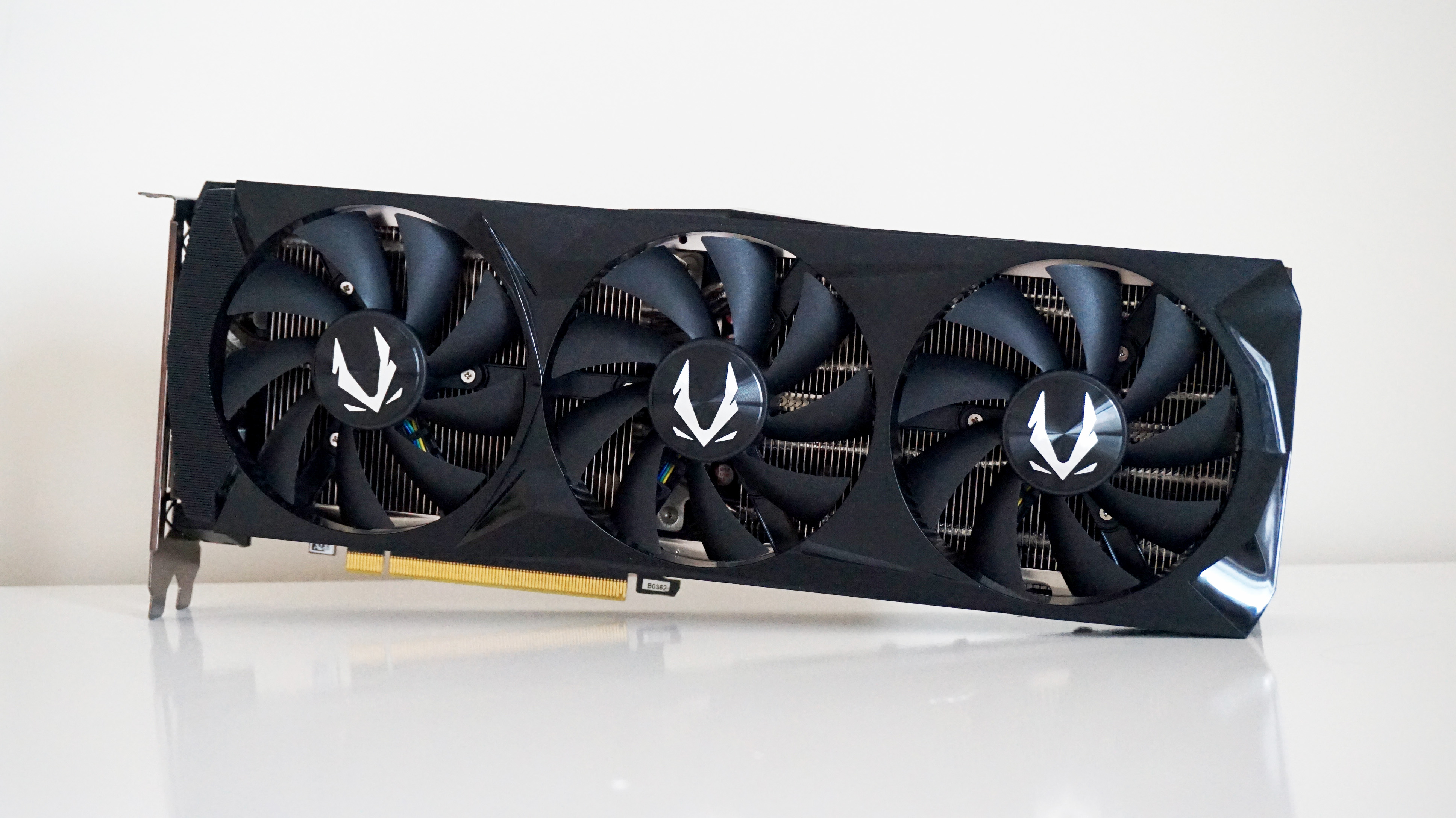
Nvidia GeForce RTX 2070
Faster than the GTX 1080 but apparently not quite as nippy as AMD's upcoming RX 5700 XT Navi GPU, the Nvidia GeForce RTX 2070 is in a bit of an odd space right now - or at least it is if you're looking for the overall best graphics card to buy for 1440p and 4K gaming. If you're just after the fastest speeds in Forza Horizon 4, though, there's still plenty to like here.
I should point out, of course, that the Zotac AMP Extreme card I used to get these results is one of the faster RTX 2070 cards out there thanks to its high boost clock speed of 1860MHz (for reference, even Nvidia’s own Founders Edition of the RTX 2070 only goes up to a maximum of 1710MHz). As a result, these speeds are probably more of a best case scenario for this particular card than something a bit broader, but as you'll see, there's hardly much to complain about.
Can I play this at 1920x1080?
Oh, go on, then, how does an average of 107fps on Ultra sound? Good? I knew it.
Can I play this at 2560x1440?
I mean, sure, 90fps on Ultra isn't quite as sexy as 107fps, but it's still pretty darn smooth if you ask me.
Can I play this at 4K?
Again, it's not nearly as slick as the results mentioned above, but I reckon an average of 62fps on Ultra will do you just fine.
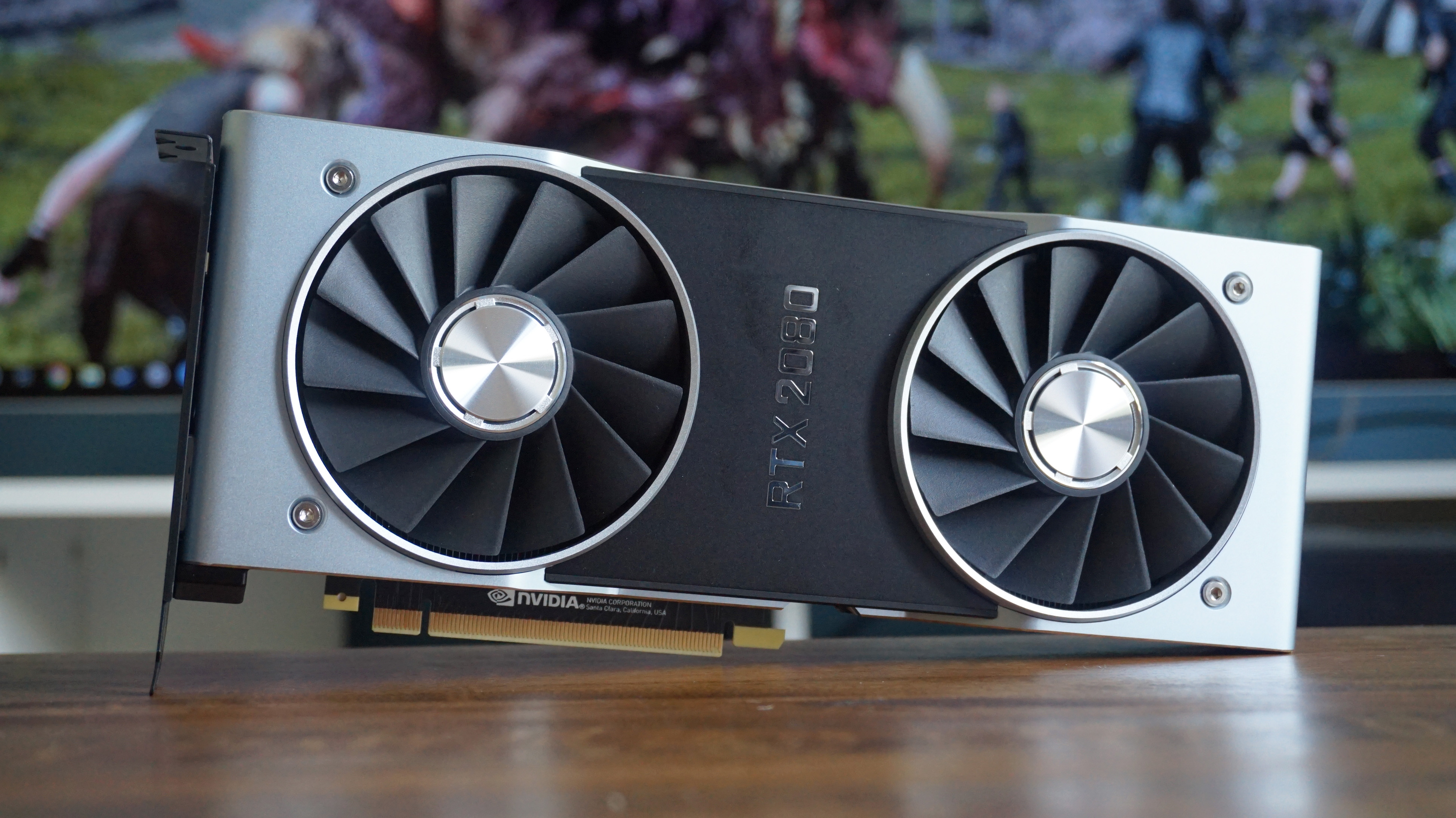
Nvidia GeForce RTX 2080
For all its ray-tracing this and clever Turing features, so far I've found the new Nvidia GeForce RTX 2080 to be roughly on par with Nvidia's existing GeForce GTX 1080 Ti. Unfortunately, I couldn't get hold of the latter in time for this particular graphics test to see if that was true of Forza Horizon 4 or not, but I'll update this article with more results as soon as I can to see how they compare. For the time being, though, I think it's probably fair to say these results will probably be roughly in line with what you can expect from the GTX 1080Ti as well, which is to say, very excellent indeed.
Can I play this at 1920x1080?
But of course. With an average frame rate of 133fps on Ultra, ranging from 118fps right up to an incredible 153fps at this resolution, the RTX 2080 gives you more than enough room to play with the game's Extreme settings and enjoy its high frame rates alike. Whatever setup you've got going on with your PC, the RTX 2080 can deliver.
Can I play this at 2560x1440?
Absolutely. Once again, the RTX 2080 can be pushed as high as you like at this resolution, as it managed a very smooth 113fps average on the Ultra preset, dipping to a low of 102fps with highs of 129fps. Go nuts on Extreme or simply bask in all that high frame rate glory. The choice is yours.
Can I play this at 4K?
Yes you can, and you can make use of a proper high refresh rate monitor to boot as well. On Ultra, the RTX 2080 bombed along at an average of 82fps in the game's benchmark, and it never dropped below 78fps either. Its peaks of 92fps were slightly more fleeting, but I doubt many people will be complaining here.
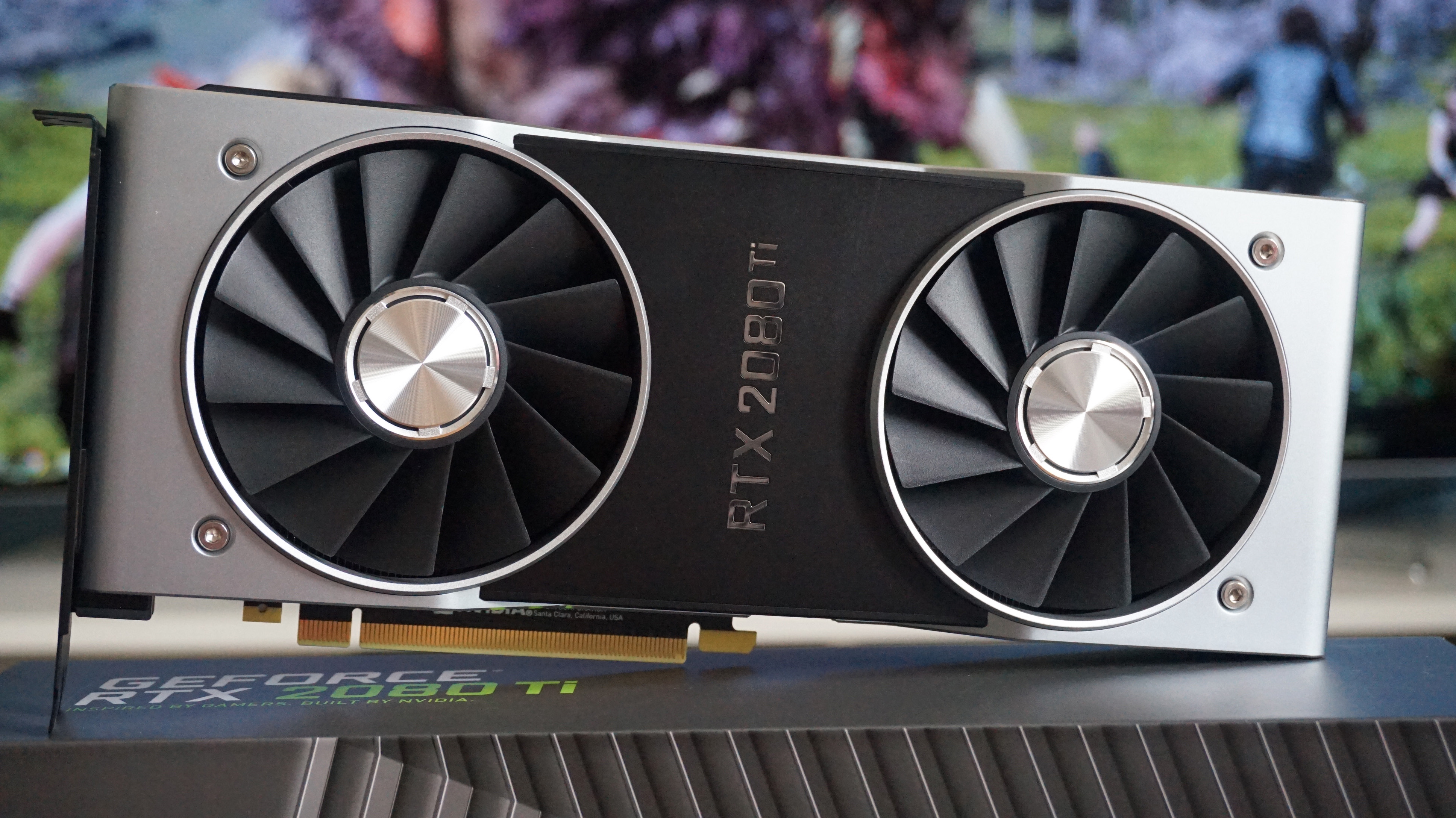
Nvidia GeForce RTX 2080 Ti
What can today's best graphics card do with Forza Horizon 4? Absolutely everything, it turns out, as if that wasn't already apparent from reading the results of the previous four Nvidia cards in this here roundup. Unlike the RTX 2080, the RTX 2080 Ti has, so far at least, proved to provide a much bigger jump in performance compared to the current GTX 10-series, and it only distinguished itself further when I chucked Forza Horizon 4 at it.
Can I play this at 1920x1080?
Of course you can. The RTX 2080Ti's average frame rate on Ultra wasn't actually that much higher than the regular RTX 2080 at this resolution, all told, hitting 139fps as opposed to 133fps, but I suspect that's probably got more to do with my Core i5 CPU acting as a bottleneck than the card itself. Indeed, the RTX 2080Ti reached a superior peak of 166fps when I ran it through the game's internal benchmark, as well as a loftier low of 129fps, so those with high refresh rate monitors will still be safe in the knowledge they're getting faster speeds, even if (whisper it) their eyes can't actually tell the difference.
Can I play this at 2560x1440?
Yes, and then some. With an average frame rate of 126fps on Ultra at this resolution, the RTX 2080Ti makes a fantastic companion for high frame rate gaming. Equally, with lows of 115fps and highs of 143fps, you've also got plenty of room to max out every setting going and push it up to Extreme. Whatever you want to do, the RTX 2080Ti gives you the power to do it.
Can I play this at 4K?
Is the sky blue? As you'd expect from the one true supercar of the graphics card world, the RTX 2080Ti absolutely delivers when it comes to 4K gaming - and goes well beyond 60fps to boot. We've already seen some impressive results from other top-end cards in this article, but the RTX 2080Ti trounces them all, delivering an average of 95fps on Ultra at 4K, with lows of just 87fps and highs of 110fps. Go on, turn everything up to Extreme, why don't ya? If you've spent over a grand on this kind of graphics card, you've earned it.

AMD Radeon R9 270
Ah, my old friend, the R9 270. With just 2GB of memory to its name and a measly base clock speed of 920MHz, this card has been the laughing stock of my previous performance tests, whether it's Shadow of the Tomb Raider or Monster Hunter: World. Well, now it's time for the R9 270 to get its own back as, surprisingly, it made a pretty decent fist of running Forza Horizon 4, proving this ancient GPU isn't quite ready for the scrap heap just yet.
Can I play this at 1920x1080?
Yes indeed, and you don't even have to settle for just Low either. In fact, you can even punch it up to High as long as you don't mind settling for an average of 33fps, but I still saw a couple of stutters down to 25fps on this preset, so you'll probably be a lot more comfortable playing on Medium instead. Here, I saw an average of 43fps at this resolution, with the frame rate varying between a low of 32fps and a high of 55fps.
That's not bad for such an elderly graphics card, and switching things down to Low didn't actually see much of an improvement. The average frame rate inched up to 47fps, but I still saw an overall range of 35-56fps during the course of the benchmark. That's probably because even on Low the game was trying to use 1.8GB of video memory out of the 1.5GB apparently available, according to Playground's results page, so the strain is probably around equal on both settings.
Can I play this at 2560x1440?
You know what? Yes you can. Surprise! Despite suffering the same memory constraints as it did at 1920x1080, the R9 270 averaged a very playable 41fps on Low at 1440p, and the frame rate never dipped below 33fps either. I even saw a peak of 49fps a couple of times, which is damn impressive.
Unfortunately, Medium was just a bit too choppy for the R9 270, as despite averaging 33fps in the game's benchmark and fleeting highs of 44fps, I also saw frequent lows of 27fps. When the game runs so much better on Low you'd be silly to cripple yourself here for a couple of slightly fancier effects.
Can I play this at 4K?
Alas, despite its valiant efforts at both 1920x1080 and 2560x1440, 4K is just too much for this little card, even on Low. Rest in peace.
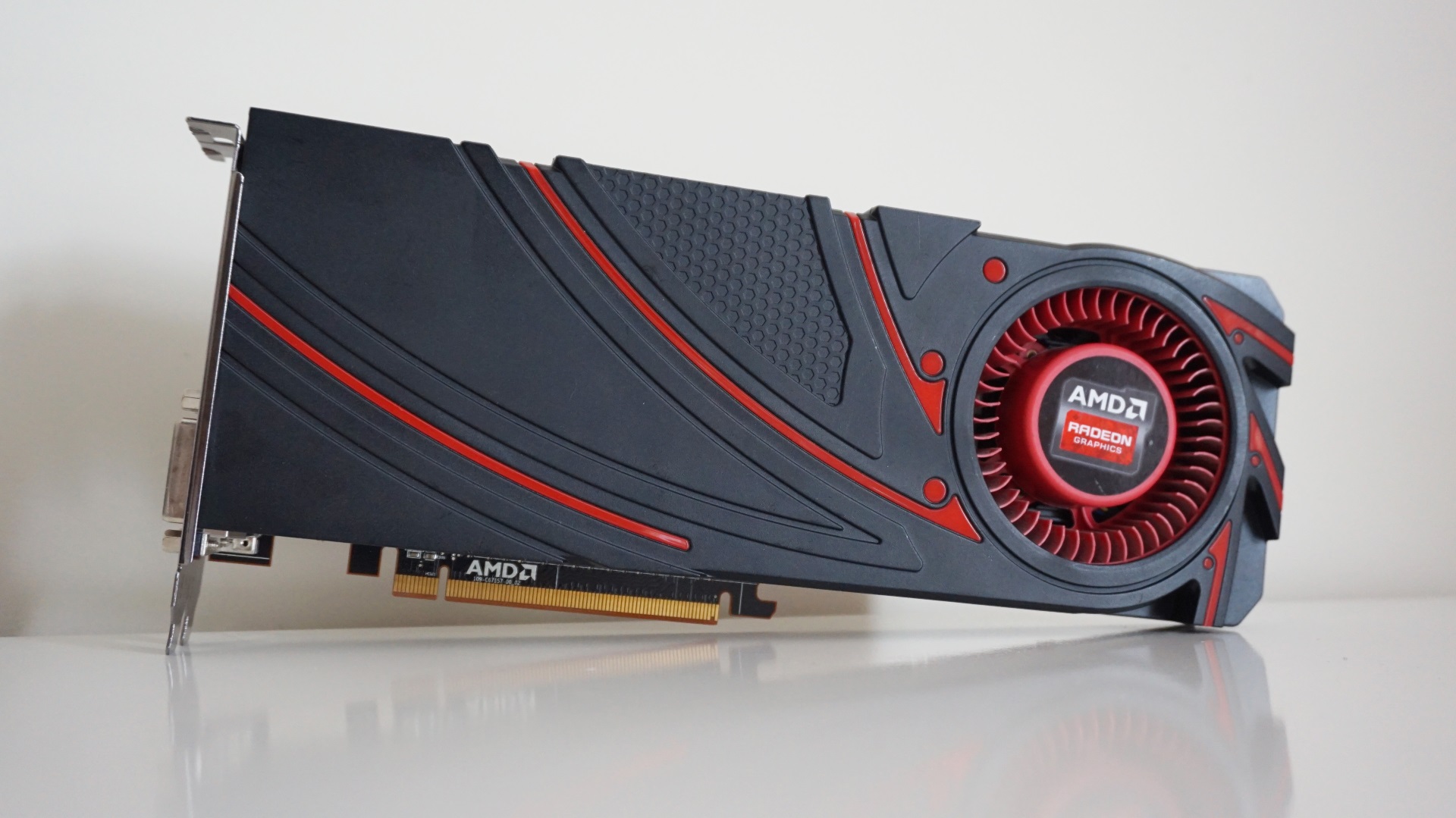
AMD Radeon R9 290
A card that's shown itself to have surprising longevity in the face of today's toughest games, the R9 290 continued to prove its worth in Forza Horizon 4. It certainly helps that it's got double the memory of the R9 270, with 4GB to its name instead of just 2GB. This puts it in much better stead to deal with Forza's beefier quality settings, even if the blower fan on this particular reference model card sounded like it was about to take off throughout the length of my testing.
Can I play this at 1920x1080?
Yep, you sure can. Much like the GTX 970, High will deliver the best results at this resolution, giving you a lovely average of 74fps and a maximum of around 85fps. I never saw the frame rate dip below 59fps, either, meaning you can get a flawless 60fps right from the word go.
You can still get pretty good speeds from the R9 290 on Ultra as well, but here you can only expect an average of 54fps due to the game requiring more memory than the R9 290's 4GB allows. Still, 54fps is hardly a bad thing on a card this ancient. Just be warned that you may experience the odd drop to 45fps if things get particularly hairy in busy races.
Can I play this at 2560x1440?
Yes, and pretty well, too. On High, you're looking at a very respectable average of 63fps, with only a couple of dips to a practically indiscernible 52fps and highs of 70fps, which is pretty good going for a card that, so far in my other performance tests, has maxed out at 1080p.
Once again, Ultra is doable at this resolution, but VRAM issues mean you're only looking at an average of 47fps, with lows of 41fps. Still, when it hits its peak of 54fps, it really feels like you're flying.
Can I play this at 4K?
Surprise, you can! I know, right? Who'd have thunk it? Just like the GTX 970, the R9 290 can do everything from Low to High at 4K. There wasn't a huge amount of variation between all three modes, with Low averaging at 50fps, Medium at 45fps and High at 42fps, but you'll probably be most comfortable on Medium. Here, the frame rate had a pretty tight range, going no lower than 40fps and no higher than 49fps, and probably strikes the best balance between speed and looking all nice and shiny.
Ultra, sadly, was just too much for the R9 290. It is doable, just, but with an average frame rate of 31fps and occasional bumps down to 27fps, you'd be much better off sticking with one of the lower presets instead. If you want to replicate the console experience, by all means go ahead, but really, bung it on Medium and go and enjoy yourself.
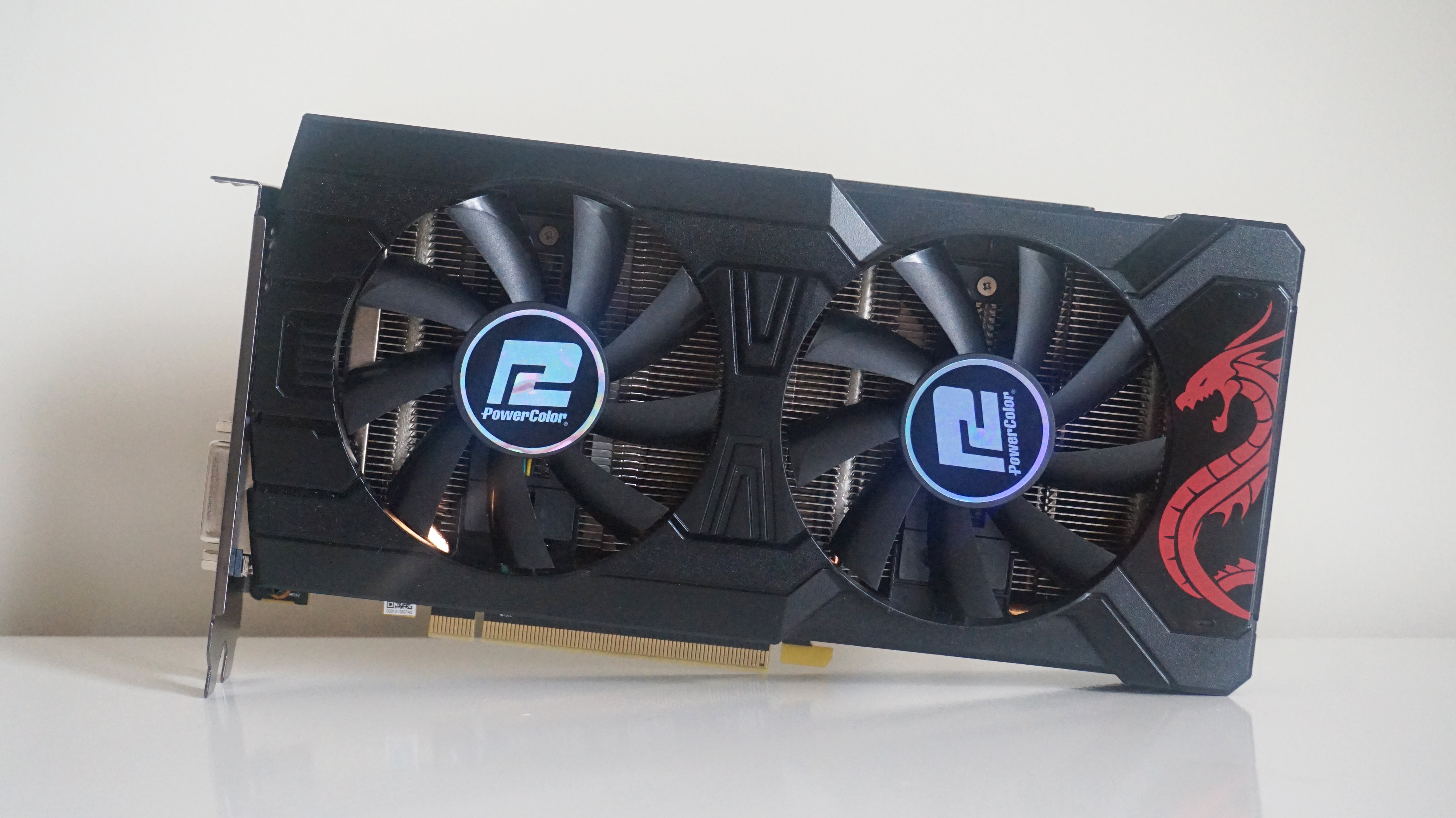
AMD Radeon RX 570
It's taken a long time to get my hands on an AMD Radeon RX 570, but having finally managed to track down one of AMD's 8GB variants while I was reviewing its latest Nvidia rival, the GTX 1650, I'm now one step closer to having the full RX 500 set. And it's good news for 8GB RX 570 owners, as it was able to run Forza Horizon 4 with hardly a wonky gear change in sight.
If anything, you may well see slightly better results than this, as PowerColor's Red Dragon version is one of the slower 8GB cards available. With a boost clock speed of just 1250MHz, it's quite a way behind the very top-end cards with boost clocks up in the mid 1300s. Still, as a baseline experience, there's a lot to like here, so let's get on down to some of those lovely frame rates.
Can I play this at 1920x1080?
Did someone say an average of 75fps on Ultra? Sign me up!
Can I play this at 2560x1440?
Absolutely, and there's more good news for Ultra seekers, too, as even the 8GB RX 570 is capable of hitting an average of 59fps here. And if that's not quite good enough for you, an average of 74fps on High certainly will be.
Can I play this at 4K?
I mean, you can, but why settle for an average of 58fps on Low when you'll get much better, and not to mention prettier results, further down the resolution scale?

AMD Radeon RX 580
AMD's Radeon RX 580 might seem a bit long in the tooth these days, but it's still one of my best GPU recommendations for those after a highly capable 1080p graphics card. Indeed, it coped handsomely with Forza Horizon 4 at 1080p and 1440p resolutions, so you should still have a mighty fine time with it despite its ever-advancing age.
This particular card is another one from PowerColor - the 8GB Red Dragon edition, albeit sans the red dragon decal found on their Red Dragon RX 570. Still, with a boost clock speed of 1380MHz, this is one of the faster RX 580 cards you can currently buy at the moment, so the results below are probably more of a best case scenario than what you should expect as an absolute minimum.
Can I play this at 1920x1080?
Yes indeedy. Stick it on Ultra and let that average of 85fps wash over you in a blur of frames.
Can I play this at 2560x1440?
You sure can, and you can do it on Ultra again, too, albeit this time with an average of 67fps.
Can I play this at 4K?
Technically yes, but Medium is the best you're going to get at this resolution, with an average of 57fps. There were still a couple of lows down to 51fps in the benchmark, though, so if you absolutely want to guarantee a solid 60fps at all times, you'll probably have to make do with Low, which averaged 66fps. But why settle for Low when you can get the same speed on Ultra at 1440?

AMD Radeon RX 590
AMD's Radeon RX 590 may not be quite as fast as Nvidia's new GTX 1660 graphics card, but it's still a fine cockpit companion for Forza Horizon 4 - especially when you're playing with this humongous Red Devil card from PowerColor.
Admittedly, its boost clock speed of 1576MHz is actually pretty typical compared to other RX 590 cards out there, so the results below should be broadly representative of what you'll see on other third-party versions as well. To the frame rates!
Can I play this at 1920x1080?
Beep beep! Sorry, I can't hear you over the sound of this engine running at an average of 93fps on Ultra, speak up!
Can I play this at 2560x1440?
Vroooooooom, sorry, did you say an average of 73fps on Ultra? Wheeeeee!
Can I play this at 4K?
All right, I'll put the brakes on now, because only will get me an average of 62fps at this resolution. What do you mean I'm still shouting?

AMD Radeon RX Vega 64
Once the best card in AMD's GPU stable, the Radeon RX Vega 64 now pays homage to the Radeon 7 (and very soon, the new pair of Big Navi cards, too). That doesn't mean this old battleaxe is out for the count yet, though, as it's still got more than enough juice left in it to deliver a consistent 60fps in Forza Horizon 4 across all three of the main resolution settings on Ultra graphics quality.
I should point out that the Sapphire Nitro+ version I used for this test isn't actually available to buy any more, but when it you could get it, it was one of the fastest in its class thanks to its high boost clock speed of 1611MHz. This means that some results may vary if you've got a slightly slower version of the Vega 64, but you can still expect great performance across all three resolutions regardless of what individual model you happen to have.
Can I play this at 1920x1080?
Go, grease lightnin', you're burning up the quarter mile with an average of 126fps on Ultra!
Can I play this at 2560x1440?
Go, grease lightnin', you're coastin' through the heat lap trials with an average of 108fps on Ultra!
Can I play this at 4K?
Go, grease lightnin', you are supreme with an average of 78fps on Ultra!
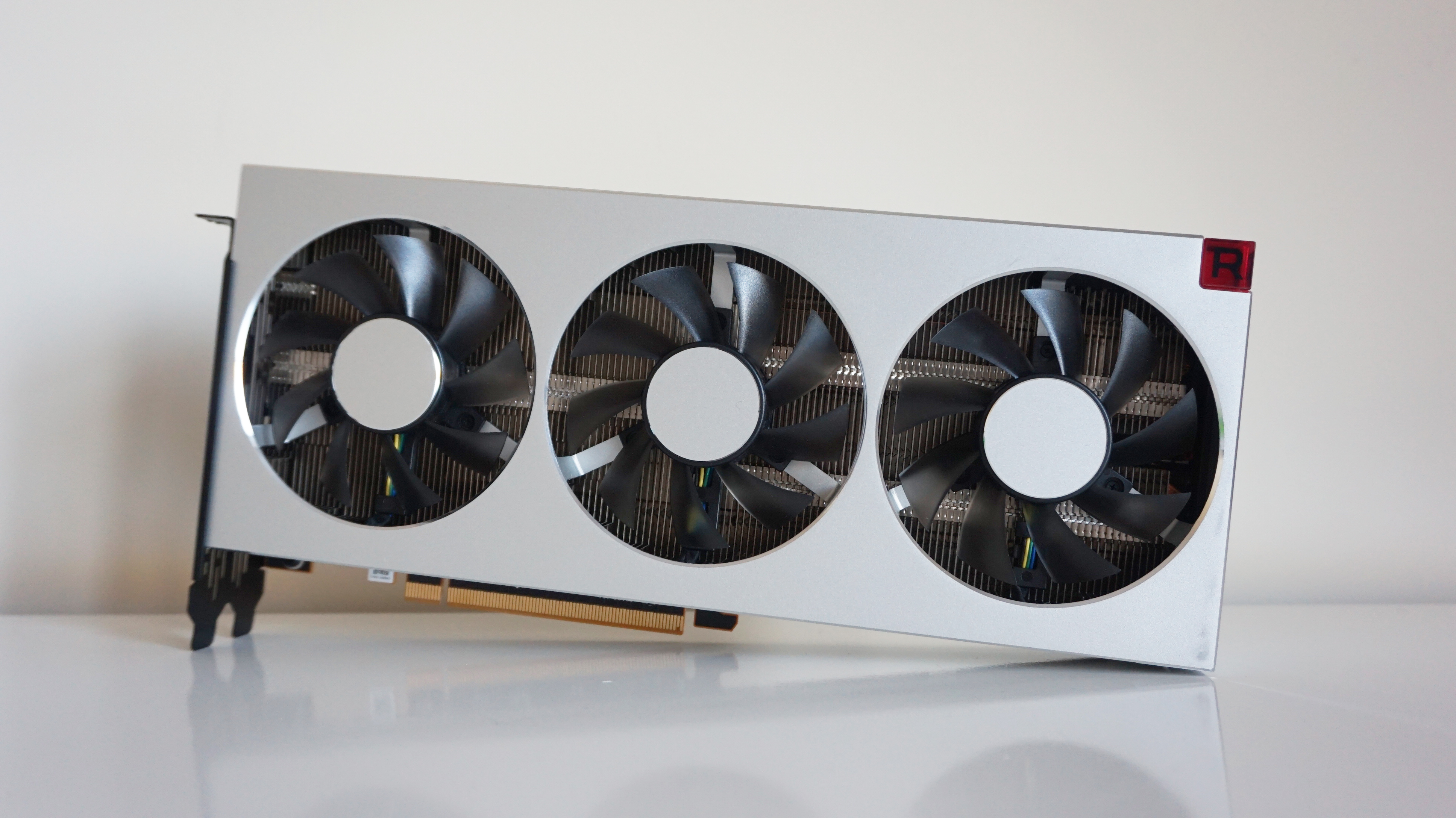
AMD Radeon 7
There may be a new pair of Big Navi cards on the way in the form of the RX 5700 and RX 5700 XT, but the Radeon 7 remains the best GPU in AMD's current roster. Pretty much just as fast as Nvidia's RTX 2080, this monster graphics card has a ludicrous 16GB of HBM2 memory to its name. You'll never need all that for playing Forza Horizon 4, mind, but hey, it never hurts to come prepared, right?
I've got AMD's reference model on test today, but when every other Radeon 7 has the same base and boost clock speeds as this one, the results below should be pretty much the same no matter what third party card you're looking at.
Can I play this at 1920x1080?
You absolutely can. Much like every other graphics card on this list, you can stick it straight on Ultra and enjoy a silky smooth average of 135fps.
Can I play this at 2560x1440?
You absolutely positively can. Again, you'll have no trouble on Ultra quality here, as the benchmark returned another triple-figure average of 113fps at this resolution, so go forth and have a good time.
Can I play this at 4K?
You absolutely positively definitely can. Once again, the Radeon 7 is more than capable of handling Forza on Ultra quality here, and if an average of 78fps isn't good enough for you, then there's simply no pleasing you.
